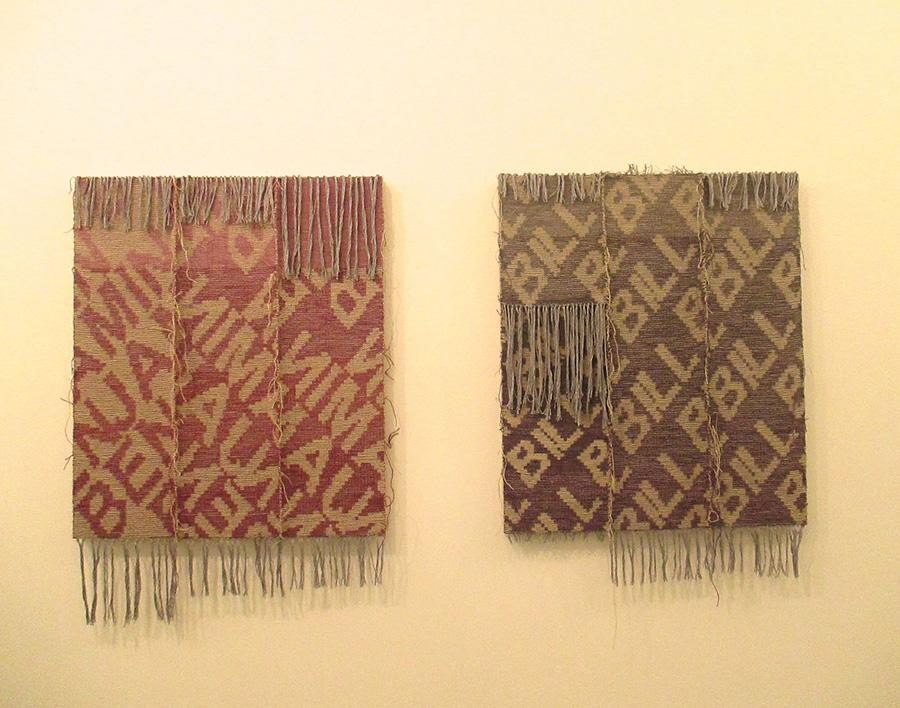Exhibit features personal sculptures
Josh Faught utilizes a variety of media in his latest exhibit.
November 4, 2014
For “Christmas Creep” at the Lisa Cooley Gallery, Josh Faught exhibits textile sculptures that reveal a personal aspect of the artist. Each one is titled with the name of one of Faught’s ex-boyfriends or one-night stands. His works juxtapose skilled weaving and ancient Japanese dyeing techniques — all intentionally done with mistakes. His pieces are adorned with onion rings, spilled coffee, broken glass and buttons.
Faught aims to capture his past relationships with precise and unique objects. This is in part a response to the AIDS Memorial Quilt, a project started in the ’80s as a way to memorialize those who have passed away from AIDS, which includes names and objects stitched into squares. It was challenging for the quilt as a single object to capture the essence of everyone who has died from AIDS. Faught’s response to this was his textile sculptures, which are more of a personal reference or archive.
While his pieces pertain to his own life, they are also general enough that the viewers are able to relate. The name Scott appears three times in the exhibit. While the audience does not know Faught’s personal life, the simple recurrence of the name implies a complicated and possibly tumultuous relationship, something any viewer can relate to in some capacity.
The idea that the pieces are both about individuality and community is apparent throughout his work. It is clear in the objects of the sculptures, but, more uniquely, it is noticeable in the process of the pieces. Faught uses many different techniques to create his textiles and each one is used with purpose.
The woven works are more communal pieces, as weaving is a process of multiple strands coming together. The pieces that are knitted or crocheted are more individual, as the structure builds upon just one strand of yarn. Many of the pieces include loose strands hanging out, and pulling out one strand would lead to the destruction of an entire piece.
This relates to Faught’s interest in transitions. He uses materials that comment on the issues of continuity and permanence, such as tapestry and perishables. There are snack foods on many of the sculptures, and Faught uses snacks because they are not quite a meal, but something in-between. Snacks are a transition of sorts — something one eats between meals for sustenance, and genrally not nutritional.
Throughout “Christmas Creep,” Faught expresses themes of time, transition, relationships, community and individuality. The way he expresses these themes, however, is specific and personal. His process of incorporating precise objects and the names of his relationships into textile sculptures make his work excitingly uncommon.
A version of this article appeared in the Tuesday, Nov. 4 print edition. Email Talia Milavetz at [email protected].
























































































































































